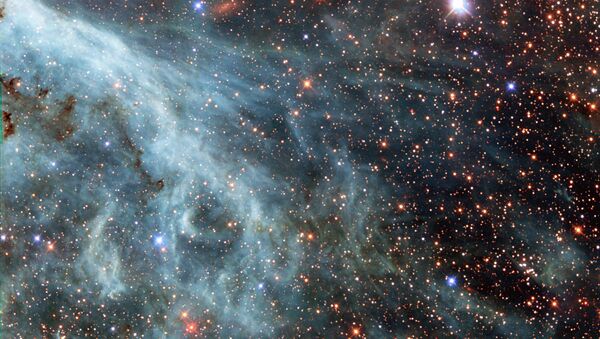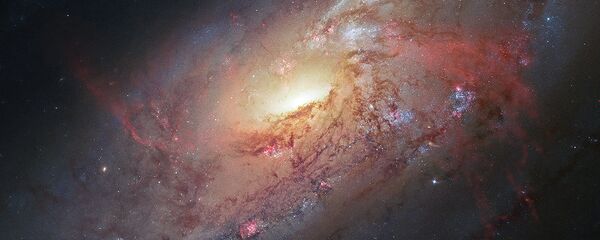The Large and Small Magellanic Clouds (LMC and SMC) are two of the closest galaxies to ours, dwarf galaxies with diameters of 14,000 and 7,000 light-years, respectively. By comparison, the Milky Way has a 100,000 light-year diameter, by the most conservative estimates.
The two dwarf galaxies passed close to one another around 200 million years ago, and the LMC may have swiped some of its smaller counterparts' stars at that time. Simultaneously, the Milky Way has been using its superior size to commandeer stars from the LMC, and other nearby galaxies.
These twin phenomena seem to have formed a trail of stars connecting the two dwarf galaxies. "Stellar streams around the Clouds were predicted but never observe[d]," paper co-author and study lead Vasily Belokurov, with the University of Cambridge, said in a statement. "[W]e were surprised to see a narrow bridge-like structure connecting the two clouds."
"We believe that, at least in part, this 'bridge' is composed of stars stripped from the Small Cloud by the Large. The rest may actually be the Large Magellanic Cloud stars pulled from it by the Milky Way," Belokurov added.
The find has led astronomers to speculate that they have underestimated the size of the LMC. More importantly, the bridge acts as a trail of stellar breadcrumbs, shedding new light on the movements of two of our galactic neighbors.
Gaia, a space observatory launched in December 2013, is meant to catalogue approximately one billion celestial bodies to better understand the formation and history of the Milky Way and surrounding galaxies. It can see a much larger swath of the heavens than the much older Hubble space telescope, and in fact has the most precise instrumentation of all current operational space telescopes, capable of taking images of the entire sky.
Gaia's data, according to study co-author Denis Erkal (also with Cambridge), shows that "the current model of galaxy formation is holding up well to the increased scrutiny."




